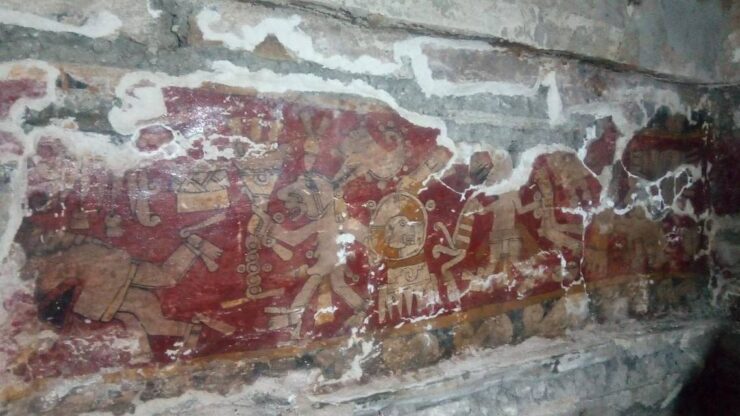The faded battling figures, colorful murals were discovered by archaeologists digging a tomb complex in San Pedro Nexicho. San Pedro Nexicho is located in the Mexican state of Oaxaca, approximately 305 miles southeast of Mexico City.
Five graves dated from 200 A.D. to 1,200 A.D. were found during site excavations. The burial sites belonged to the Zapotecs, an indigenous Mexican people who formed one of the region’s largest and most important pre-Hispanic settlements.
According to Haverford University teaching materials, the Zapotecs were the “first American society to develop a written tradition,” and their people and culture are still alive today.
The largest tomb was located on a mountain terrace and had a small ramp leading into the cross shaped burial structure. This colorful murals covered tomb was discovered by a neighbor in 2010, and archaeologists spent years excavating the area and restoring the building to its original splendor, according to officials.
Archaeologists discovered four more Zapotec graves during this project, all of which were older than 800 years. Several of these tombs had been robbed, leaving only a few fragments of fabric and little trinkets. However, two tombs were left unopened and with their whole burials intact for many years.
In these untouched tombs, researchers found bones of the deceased and 240 objects, including writing tablets and sculptures in a unique mountain style.
Soldiers have stood on the wall of a burial complex in Mexico for centuries, the colorful murals honor the heroic efforts of a group of warriors armed with guns and shields who entered the bloody conflict.
As a result according to a report from The Telegraph, archaeologists have discovered roughly a dozen ancient Zapotec tombs overall. These also five tombs offer a glimpse into the pre-Hispanic aristocrats’ funeral practices.
Cover Photo: Mexico’s National Institute of Anthropology and History (INAH)
